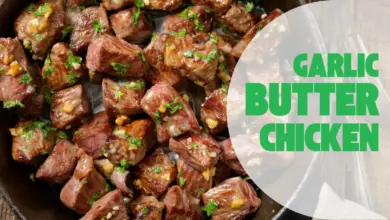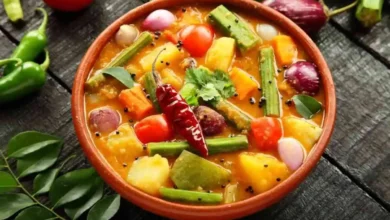6 Popular Indian Rice Varieties

Indian Rice
Table of Contents
Introduction
Explore the diverse world of Indian rice with our guide to six popular Indian rice varieties. From aromatic Basmati to flavorful Jasmine, we delve into the unique characteristics and culinary applications of these exquisite grains. Discover the rich heritage and cultural significance behind each rice variety, as we take you on a journey through the culinary landscapes of India. Whether you’re a seasoned chef or an adventurous home cook, these Indian rice varieties will add depth and authenticity to your meals. Unveil the secrets of Indian rice and elevate your dining experience with these versatile and beloved grains.
Rice is one of the most widely eaten foods on the planet, and it is a staple in many countries, including India, where 50 percent of the population relies on it for survival. Although many people are familiar with India’s basmati rice, the country currently cultivates about 6,000 different varieties of rice in the country.
Indian Rice is a favorite of every kitchen in the country, and there are so many varieties that it lends itself to a variety of dishes. However, think twice before using the same kind of rice in any recipe you make. A recipe’s outcome may be drastically altered by substituting one kind of rice for another. Each type of rice has its distinct flavor, texture, and properties that complement a variety of cooking methods. In India, there are still about 6000 different varieties of rice, but ecologists predict that there are thousands of versions of rice that we have already lost.
Even so, Indian rice varieties are among the world’s most diverse, ranging from herbal and fragrant long-grain basmati varieties grown in the north to roundish medium-grain glutinous rice grown in the south’s coastal regions. Other varieties include “red rice,” which is a coarse-husked variety with a reddish-brown exterior color and is very common in South India as well as other countries abroad. In India, parboiled rice is common because the rice is handled differently after harvesting. Indian rice, in general, can be divided into three categories: short grain, medium grain, and long grain.
Let us focus on 6 popular rice varieties that are consumed all over the country.
Ambemohar
Ambemohar is a very popular rice variety in Maharashtra and nearby regions. It’s one of the most aromatic varieties of rice in the state. The word Ambemohar indicates the famous mango blooms in Marathi. These beautiful rice grains impart a similar aroma to any dish cooked with this rice. Although it’s short-grain rice, in taste it’s much better than the local white rice varieties. You can use this rice to make different Maharashtrian dishes like Varan Bhat. Other delicious dishes like Tawa Pulao & Masale Bhat can also be prepared.
Seeraga Samba Rice
Another common variety from Tamil Nadu is Jeera Samba Rice, also known as Seeraga Samba Rice. The name Seeraga comes from the fact that the grains resemble Cumin seeds in appearance. Seasons is the meaning of the term Samba. The rice is well-known in popular TamilNadu Biryanis such as Ambur Biryani and Dindigul Biryani. Even though it is not long-grain rice, it adds a distinct fragrance to a variety of rice preparations.
Basmati
In India, basmati rice reigns supreme over all other varieties of rice. It’s rice with long grains. It’s also a common rice variety for making Biryanis, Pulaos, and a variety of other royal rice dishes. Aromatic is a term that comes to mind when thinking of basmati rice. And it lives up to its hype. There is certainly no other kind of rice that is as fragrant and flavorful as basmati rice from India. India is the world’s largest producer of Basmati rice in the world.
Dubraj
Dubraj is an Indian rice variety with medium grain size. Madhya Pradesh and Chhattisgarh are the states where it is primarily grown. It’s also a fragrant rice variety, so you can make flavorful rice dishes at home with it. The form and texture of Dubraj rice do not deteriorate. As a result, it’s a fantastic alternative to Basmati rice.
Gobindobhog
The Gobindobhog, oh, the Gobindobhog! Each Bengali holds a special place in his or her heart for Gobindobhog rice. It is one of the most common rice varieties in West Bengal due to its distinct flavor, texture, and aroma. Furthermore, the grains are not as long as those used in Basmati rice. And because of these characteristics, the rice can be used in almost every rice dish prepared in Bengali homes.
Indrayani
In Maharashtra, Indrayani rice is a common variety. It’s grown in Pune’s Maval neighborhood. It is a hybrid form of Ambemohar rice with medium grain size. This rice variety can also be used to make Plain Rice, Masale Bhat, Vangi Bhat, and other dishes.
According to a survey, the most popularly loved Indian rice recipe is Biryani, which is a kind of rice pilaf cooked with fragrant herbs and spices. From the hot and spicy biryani of Hyderabad to a variant with prawns and coconut taste in Kerala to the delicate and slow-steam-cooked biryani of Lucknow in the north, there are several variants of biryani with major regional variations. It’s a full meal with a thin yogurt and vegetable “raita” on the side.
Conclusion
Indulge in the rich tapestry of flavors offered by the diverse range of Indian rice varieties. From the fragrant Basmati to the aromatic Indrayani, each grain has a story to tell and a unique place in Indian cuisine. With their versatility and distinct characteristics, these popular Indian rice varieties will elevate your culinary creations to new heights.
Whether you’re preparing a biryani, a pilaf, or a simple side dish, the choice of Indian rice can make all the difference. Embrace the culinary heritage of India and savor the delights of these beloved grains. Add a touch of authenticity to your meals with the finest Indian rice varieties. Explore the world of Indian rice and experience the magic it brings to your table.
Related Articles
Indian Food – A Comprehensive guide
Indian Cuisine – An Aromatic Speciality
Indian Restaurants – Where and What To Eat
A Best Guide to Typical Indian Meals With 7 Basic Dishes
6 Popular Odisha Famous Food You Must Try
The Creamy and Delicious Punjabi Food – 5 Best Dishes







